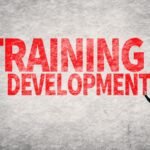Using Star Profiles to Foster Talent Development and Retention
In a previous article, I discussed the concept of “star profiles” as a means to enhance hiring decisions and establish a performance review system. In this column, I will illustrate the everyday utilization of star profiles and their role in talent development and retention, drawing inspiration from Rabbi Kenneth Brodkin of Congregation B’nai Israel in Manalapan, N.J. Rabbi Brodkin has created a star profile for a director position at his synagogue, which exemplifies the value of this approach:
Director of Synagogue Life
- Demonstrates a passion for our mission to build a thriving center of the Jewish community.
- Works with the rabbi to manage engaging programs and efficient operations.
- Demonstrates excellence in welcoming and engaging people in synagogue life.
- Works creatively and proactively, anticipating and addressing key needs in our organization.
These four sentences encapsulate Rabbi Brodkin’s vision for the director role, capturing the attributes that maximize the individual’s contribution to the synagogue and the broader Jewish community. Each word has been carefully chosen to align with the right-brain concept of success—the vivid image or script of actions that will create the most significant positive impact.
To highlight the contrast between a star profile and a job description, let’s consider the first sentence. While a candidate may possess all the necessary qualifications, lacking passion and ambition in building a thriving Jewish community can lead to a failed relationship with the rabbi.
Similarly, the second sentence emphasizes the importance of the director’s involvement in developing engaging and efficient programs and operations. Regardless of qualifications, failure to contribute in these areas can result in problems.
The third sentence focuses on the critical factor of welcoming staff members in religious and community organizations. The success of an organization often hinges on the staff’s ability to connect with and engage members, donors, volunteers, and community leaders. It is not solely a matter of qualifications but rather how the director interacts with others.
Lastly, the fourth sentence acknowledges the unpredictable nature of leading a religious organization. Urgent circumstances, crises, or community events may divert the leader’s attention. In such instances, the director must proactively respond and anticipate needs to ensure smooth operations without any breakdown or impairment.
Essentially, the star profile fosters a relationship between the boss and the employee. It conveys the message that the director’s success is intertwined with the rabbi’s success and emphasizes collaboration, idea generation, and open communication to make the synagogue an exceptional place within the community.
If you are interested in unleashing employee talent and retaining skilled individuals, I recommend considering star profiles for each position under your supervision. HR professionals should also familiarize themselves with the star profile approach to serve as coaches to organizational leaders, assisting them in developing a clear vision of success for each role. By refining and crafting words that inspire both leaders and their team members, HR professionals can facilitate strategic conversations about the job and its significance within the organization.
In conclusion, Rabbi Brodkin aptly describes the star profile as an empowering way to define a position’s essence and an exciting tool for development. Once a compelling star profile is established, it can serve as the centerpiece for strategic discussions about the role with team members, applicants, and ultimately, the successful candidate.


































